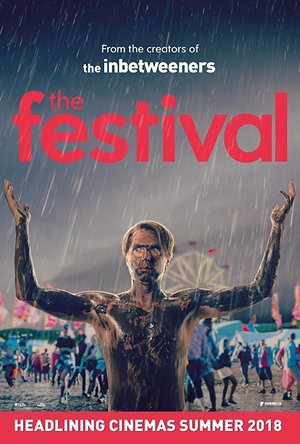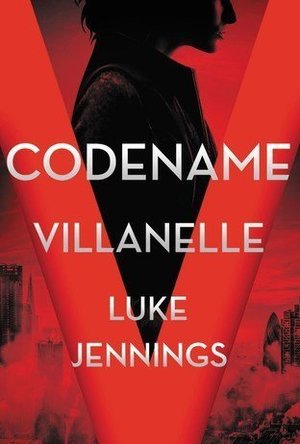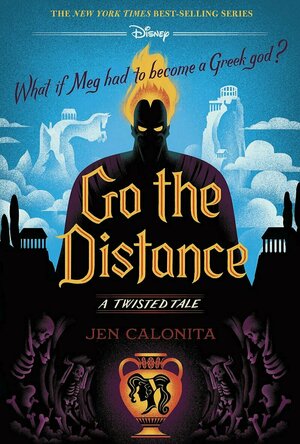Lee (2222 KP) rated The Festival (2018) in Movies
Aug 29, 2018
In The Festival, Joe Thomas plays Nick, preparing to graduate and soon to head off to a festival with best friend Shane and girlfriend Caitlin. After a cringe-worthy ejaculation gag involving his mother, getting dumped by Caitlin and having a breakdown on stage at his graduation ceremony, Nick becomes depressed and it's up to Shane to try and drag him along to the festival and moveon with life. On the train to the festival they meet up with Amy, who's also on her way to the festival, and when they do finally get there they end up camping right next to ex-girlfriend Caitlin and her friends.
Your level of enjoyment throughout The Festival is going to vary depending on how you feel about festivals as a whole. If you're like Nick for much of the movie, then you're going to share his discomfort with the mud, the toilets and the cramped camping arrangements, laughing at him and his frustrations with it all ("I just want to go home and have a nice shower and a poo!"). If you're a festival goer yourself then you'll revel in the whole experience lived out on screen, as the movie was actually filmed during a real festival. Along the way there's drink, drugs, druids(!) and nudity for Nick to endure as he hopes to get back with Caitlin, and then later on a blue smurf girl who he hooks up with for a one night stand.
The supporting cast are all fairly funny, particularly Hammed Animashaun and Claudia O'Doherty as friends Shane and Amy. But, it's the brilliant Jemaine Clement as Shanes stepdad who manages to steal every single scene he's in and is just hilarious. Sadly though he's not in it as much as he should be.

Baby Kicks Monitor - Fetal Movement & Tracker
Medical and Health & Fitness
App
Baby Kicks Monitor is designed for all the pregnancy Mums as a baby kicking counter. From about...

Baby Kicks Monitor Pro - Fetal Movement & Counter
Health & Fitness and Medical
App
Baby Kicks Monitor is designed for all the pregnancy Mums as a baby kicking counter. From about...
Ivana A. | Diary of Difference (1171 KP) rated Codename Villanelle (Killing Eve #1) in Books
Aug 3, 2020
<a href="https://diaryofdifference.com/">Blog</a>; | <a href="https://www.facebook.com/diaryofdifference/">Facebook</a>; | <a href="https://twitter.com/DiaryDifference">Twitter</a>; | <a href="https://www.instagram.com/diaryofdifference/">Instagram</a>; | <a href="https://www.pinterest.co.uk/diaryofdifference/pins/">Pinterest</a>;
#1 <a href="https://www.goodreads.com/review/show/3346735674">Codename Villanelle</a> - ★★★
#2 <a href="https://www.goodreads.com/review/show/3350743338">No Tomorrow</a> - To Be Read
<img src="https://diaryofdifference.com/wp-content/uploads/2020/06/Book-Review-Banner-62.png"/>;
<b><i>Codename Villanelle is a book I listened to. I don’t often listen to audiobooks, but I wanted to read this book, and I didn’t own a physical copy.</i></b>
The reason I wanted to read this book is because I heard there is a TV series coming, featuring Sandra Oh from Grey’s Anatomy. I loved Sandra as Christina, and I knew I was going to love her as Eve. The TV Series is a hit, and I love it, but this is not why we’re here. We are here to talk about the books. On this occasion, the first book in the series.
<b><i>Villanelle is one of the world’s best assassins.</i></b>
She is a psychopath who loves her luxurious lifestyle and loves playing mind games. She is hired by a powerful group called the Twelve, and she is tasked to murder rich and influential people.
<b><i>Eve Polastri is a former MI6 operative.</i></b>
She is hired to find and capture or kill this assassin. Eve, who has a quiet life with her husband Nico and enjoys the peace, accepts the mission. However, little does she know, everything is about to change.
The chase is an exciting one and we never know what will happen next.
Honestly, I had troubles with the audiobook. The pronunciation of everything in Russian, French and Italian was a complete miss, and it annoyed me. Names, food, places, cities - it was all said incorrectly. I know for some people this is a minor issue. However, for me, it took away the joy throughout the whole book.
Apart from this, the first book of the series is a great introduction to both Eve and Villanelle. We find out more about their personalities and characters. We follow Villanelle in a few of her assassinations, and we follow Eve in some of her investigations. I think this book focused more on VIllanelle, featuring her childhood and training days as well. The presentation of their feelings and insights was immaculate. I loved their relationship forming, even without them meeting each other. There is tension, there are clues, and there is the play of destiny to always end up chasing each other.
<b><i>The writing was good and the pace was fast, which led to a very fast adventure. Also, the ending was intriguing, and it definitely leaves space for the second book to come in and explain a few things.</i></b>
I am looking forward to continuing this series and reading the second book - No Tomorrow. I recommend Codename Villanelle to everyone that loves action, assassination, murder, spy themes and psychological thrillers.

Barometer & Altimeter Pro
Weather and Utilities
App
This app uses the barometric pressure sensor found in the iPhone 6, 6s, 7, 8, X (including Plus...
Daniel Boyd (1066 KP) rated Hitman in Video Games
Oct 19, 2017 (Updated Oct 19, 2017)
You can look at this game in two different ways. If you accept it as an adaption of the Hitman games that have preceded it, presented in a new format type for a new audience, then it’s great and it totally achieves what it set out to do. If like me, you were hoping for something more like the PS2 era games in the series, you will most likely be disappointed. Whether you love or loathe this new way that Hitman is being presented to us, I think it’s fair to say that it is certainly different to what we are used to.
At this point, after playing through the entire game over the last month or so, I have learned to accept it for what it is and came to the conclusion that it’s not the Hitman I remember from my preteen days and that’s okay. It is a different take on the series’ traditional underlying themes and mechanics, updated for a modern audience and even as a die hard, old school fan of the franchise, I can appreciate that.
My favourite thing about this game is that it allows you, as the player, to decide on the level of respect the game treats you with. What I mean by that is, if you have never touched a Hitman game, or even a stealth game before, this is a fantastic starting point. If you are looking for a my-first-premeditated-murder-simulator experience, this is the best recommendation I can think of. Just buy the entire season, boot up the game, play through each stage in order and on normal difficulty and follow the step by step prompts to take down each target. If you play this way, the game ends up functioning as a Wiki-how for any of the past games in the series and can even be used to train you to be better at stealth games in general. However, if you consider yourself a more of a hardcore, matter-of-fact assassin and want the most immersive and unencumbered version of the experience, you can totally have that also.
I know that it isn’t a popular opinion, but I enjoyed my time with Absolution, (the previous entry in the franchise,) however I agree with the overall belief that that game didn’t know what it wanted to be. This latest Hitman game knows exactly what it wants to be and executes what it sets out to do beautifully. Even if you aren’t a fan of the new way this game plays out, it is irrefutable to say that it doesn’t confidently accomplish its intention.
In addition, the technical elements of the game are fairly solid also. The gameplay is precise but fun, the gameplay graphics are pretty nice to look at and the cut-scene graphics are almost photorealistic. The level design functions well to compliment the tasks that you are assigned meaning, the use of lighting and strategic placement of weapons and items etc doesn’t seem too out of place. I experienced some cosmetic glitches and clipping during my time with the game, but never anything game-breaking. The only technical issue that severely hindered my experience was the online connectivity, or lack thereof. I can recall multiple times where I was in the middle of choosing my custom loadout before endeavouring on my next mission, only to be kicked out of the menu halfway through and told that connectivity to the server had been lost. This grew tedious after around the tenth time it happened and more than once caused me to put the controller down and stop playing for the night as multiple attempts to re-establish a connection were in vain.
Lastly, the story is unfortunately unremarkable; it is just a heartless, tacked on excuse for you to move from one setting to the next, but it functions as a justification for 47 to travel to the various locations where the missions take place. The only other downside to this experience was the feel of the game. This criticism is hard to put into words, but in the six missions; the process going in and out of each location as smoothly as possible, coupled with the focus on gameplay mechanics and the lack of cohesiveness to the story makes for a disjointed experience that I don’t think will stay with me over a significant amount of time other than thinking back and saying, “that stealth game had some really well implemented mechanics.” I don’t think that I will ever feel any real nostalgia for this game, nor will it stand out in my mind for anything other than its technical elements. Although the locations are vast and the opportunities the player can take advantage of are numerous, the game feels brief and somewhat unfinished once you complete it. You really get the feeling of this being part of an ongoing series, rather than a solid standalone game. The lack of any definitive beginning, middle and end sections to the game makes it feel rather unsatisfying once you reach the climax and causes the game overall to be more of a mesh of various missions clumsily thrown together, rather than a progressive chapter it 47’s career. The game I played immediately before Hitman, was Nier: Automata and that game managed to have both solid mechanics and some heart within it too. I know that 47 is supposed to be a cold, calculated, heartless killer, but that doesn’t mean that the games he stars in have to be heartless as well.
Overall, this is a solid stealth game and there is a lot of fun to be had here. Just know going in, if you are a long time Hitman fan, some things are going to be different. That doesn’t mean they will necessarily be bad, but you will certainly see a new spin being put on the tried and tested mechanics of past game in the franchise. If this is your first stealth game, then I would say that there is no better introduction into the genre, especially if you use the Opportunities menu. Unfortunately though, it does seem more like a variation of well made parts, rather than a solid, cohesive whole.
Lottie disney bookworm (1056 KP) rated Go the Distance: A Twisted Tale in Books
Jun 17, 2021
Following on immediately from the end of the much loved Hercules film, Jen Calonita is back with a twisted tale starring our favourite D.I.D: Damsel in Distress.
Now, I LOVE sarcasm and sass so Meg has always been a firm favourite of mine. I was thrilled when I heard she would finally be getting her own story and did Calonita disappoint? No she did not!
Go The Distance is told entirely from Meg’s point of view: immersing the reader immediately in her thoughts and feelings whilst ascending to Mount Olympus with Hercules. I loved how in tune Jen Calonita was with her protagonist, right from the first few pages: there is literally SO much pomp and circumstance surrounding Meg, she is stood on a cloud for goodness sake! But does that stop her doubting herself? Doubting the budding relationship with Herc? Not a chance!
It will come as no surprise to regular readers of twisted tale novels that Calonita quickly tanks our hopes of a happy ending (makes sense- we’re only in the first few pages) as Zeus refuses Hercules’ request to be with Meg on Earth: the lightning-wielding god and his wife have waited too long for their son to re-join them, to lose him this easily. However, Hera can see how happy this mortal makes her son and so makes Meg a once-in-a-lifetime offer, complete a hero’s quest in 10 days and stay with Herc on Mount Olympus as a god for eternity.
Obviously Meg accepts- it would be a short story if she passed this opportunity up- and embarks upon an adventure like no other. As well as having to navigate the underworld, negotiate with Hades and face her ex, Meg battles monsters, befriends Gods and learns her most important lesson: that love is a strength, not a weakness.
Joining Meg on her journey are characters we know and love, such as Phil, Pegasus and Hades. It would be so easy for Jen Calonita to play it safe with these iconic characters but I am pleased to say that these guys get their own little developments too: particularly Hades as we see the character of Persephone and her impact upon his life.
Calonita also introduces us to a host of new characters, two of which are pivotal to both the reader understanding how key events in her life have created this tough armour that Meg wears so well. These are Thea, Meg’s mother and Aegeus, the man who Meg gave up her soul for. Aegeus is a bit wet in my opinion (he’s no Wonder Boy!) but the relationship Calonita creates between Meg and Thea is something precious: the reader can see the struggles faced by both women and can immediately identify where Meg got her fiery nature from.
But of course our heroine is the one who shines in this twisted tale: Meg was already a brilliant character but Calonita opens her up a little bit more and manages to break down some of her walls: along her quest Meg almost embraces her vulnerability, she learns to trust and learns that it is not a weakness to ask for and accept help. After that her quest seems to become easier- which is saying a lot in the underworld!
I also really admired that Meg doesn’t go weak at the knees at the prospect of spending eternity with Hercules, in fact she isn’t sure she wants eternity, she just wants the chance to find out! This made the underlying love story real rather than fairytale. Herc and Meg argue, they say things they regret but ultimately, they show up for each other and that’s what is important in the end.
I have seen other reviewers slating the character of Meg, saying that she is too rash and hot-headed in this twisted tale and bears little resemblance to the animated character we love. I have to say I completely disagree with these views: yes, as her quest nears its deadline then Meg becomes increasingly rash but hello, the girl gave up her soul to Hades! You can’t tell me she doesn’t have previous form for diving head-first into a situation?!
Go The Distance is an adorable novel about embracing your vulnerability and trusting those who want to help you. It teaches us that independence does not necessarily mean facing everything alone, love does not necessarily come from one stand-out moment and that it is never too late to forgive. This twisted tale is not as dark as other retellings in the series but Jen Calonita is an expert in middle-grade literature and so this is not a surprise nor a criticism.
“Two thumbs, way way up for our leading lady!”
Kristy H (1252 KP) rated Into the Water in Books
Feb 8, 2018
It's never easy to follow up a blockbuster like [b:The Girl on the Train|22557272|The Girl on the Train|Paula Hawkins|https://images.gr-assets.com/books/1490903702s/22557272.jpg|41107568] - I cannot even imagine the pressure. I didn't adore that book, but I do remember that I basically read it in one sitting. That wasn't the case with INTO THE WATER, though in its defense, I read it during an extremely busy period with work, where I basically collapsed in bed each night to read a few chapters.
This is not a bad book, but it wasn't a great one, either. It's not one that will stay with me. For one thing, much of its plot is predicated around one of my most reviled literary pet peeves: ridiculous miscommunication. You know, that whole thing where if the characters would just talk to each other, as normal folks do, for about 5 minutes, we wouldn't have to go through any of this? Yes. That. So that irritated me to no end.
There are also a lot of points of view in this book. It's not necessarily a bad thing, but it certainly took a while to keep everyone straight. I was glad I was reading this as an actual book, so I could flip back and see whom I'd been reading about earlier. Slogging through those early portions of many characters slowed things down for me and made it harder to get into the story.
As I said, it's not a bad book. I enjoyed reading it. The storyline is fairly interesting, overall, and it held my attention, even when I was pretty tired. I had a pretty decent suspicion of "whodunnit" fairly early on and turned out to be correct, but about halfway through, I was still second-guessing myself and pretty captivated. Nel, Jules, and Lena are intriguing characters, if not fairly frustrating in their lack of ability to talk to one another.
Still, overall, I was left feeling a little deflated by this one. There was no big "gasp" moment for me (perhaps because I had a decent inkling what had happened early on?) like GIRL. It was just a fairly good thriller that kept me entertained for a few days.
<center><a href="http://justacatandabookatherside.blogspot.com/">Blog</a>; ~ <a href="https://twitter.com/mwcmoto">Twitter</a>; ~ <a href="https://www.facebook.com/justacatandabook/">Facebook</a>; ~ <a href="https://plus.google.com/u/0/+KristyHamiltonbooks">Google+</a></center>;
<a href="https://diaryofdifference.com/">Blog</a>; | <a href="https://www.facebook.com/diaryofdifference/">Facebook</a>; | <a href="https://twitter.com/DiaryDifference">Twitter</a>; | <a href="https://www.instagram.com/diaryofdifference/">Instagram</a>; | <a href="https://www.pinterest.co.uk/diaryofdifference/pins/">Pinterest</a>;
<img src="https://diaryofdifference.com/wp-content/uploads/2019/11/IllBeHome_BTB.jpg"/>;
<i><b>I'll Be Home for Christmas is a fast-paced adventure that will keep you on your toes right until Christmas!
I am so thrilled to be part of the blog tour for Mills & Boon for I'll Be Home for Christmas. Check out the other amazing people that are participating in the blog tour as well:</b></i>
<img src="https://diaryofdifference.com/wp-content/uploads/2019/11/Book-Review-Banner-11.png"/>;
I'll Be Home for Christmas is the first Christmas book I have read this year, before the holidays begin. It is an amazing story about a popular UK singer, Jessika Malone, who receives an offer from a famous US singer to record a duet and go on a US Tour for a while. This is a dream come true, but this offer comes right after Jessica's boyfriend proposes. Wanting to spend all the time in her world with him, she is hesitant to go, but at the same time, this is an opportunity of a lifetime.
We see our heroine Jessika travel to the US and embark her adventure. I loved the fact that we get to feel what she feels, and live through her dream. We get to see her cope with new things and learn along the way, and it is amazing being on this journey with her. She is a character that knows what she wants and is not afraid to go and get it.
<i><b>Be ready for some drama, and also be ready to choose sides.</b></i>
The author makes it hard to know what is the right choice, and all choices seem to have their pros and cons, which makes the book even more realistic. I wish I knew what was right or wrong in life straightaway - that would be too easy. Instead, I keep coming across tough choices that sound amazing, and I have to really look though everything and choose what is right. You get to see this reality in the book, and it is refreshing.
Despite it being a Christmas book, I didn't really feel the Christmassy vibes too much, but I think that is due to the fact that the focus on this book wasn't entirely Christmas. We only got a glimpse of the holiday spirit around the end of the book - but it wasn't in a Home Alone sort of style. It was simple.
Despite that, I still enjoyed this book a lot, and it was the perfect book for me to get me through my days when I felt poorly and lying in bed. I recommend it to all of you out there that love romance, Christmas, a bit of an adventure and searching for our true selves.
<i><b>Thank you to the team at Mills & Boon, for letting me be a part of this Christmas adventure!</b></i>
<a href="https://amzn.to/2Wi7amb">Wishlist</a>; | <a
<a href="https://diaryofdifference.com/">Blog</a>; | <a href="https://www.facebook.com/diaryofdifference/">Facebook</a>; | <a href="https://twitter.com/DiaryDifference">Twitter</a>; | <a href="https://www.instagram.com/diaryofdifference/">Instagram</a>; | <a href="https://www.pinterest.co.uk/diaryofdifference/pins/">Pinterest</a>;

Lazada - #1 Online Shopping
Shopping and Lifestyle
App
#1 ONLINE SHOPPING DESTINATION Free Delivery | 100% Guarantee | Cash-on-Delivery With over 100...





